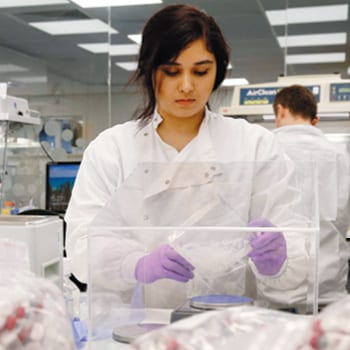A strategy to safely reopen without a COVID-19 vaccine

Until we have mass deployment of an effective vaccine, knowing who’s infected with COVID-19 is key to stopping transmission of the virus. Testing capacity in the U.S. has improved, but it’s still focused largely on those experiencing symptoms or who came into contact with someone who could be infected. This misses asymptomatic and pre-symptomatic individuals, who account for nearly half of the virus’ transmission, scientists say.
But Haas Associate Professors Jonathan Kolstad and Ned Augenblick, together with Ziad Obermeyer of the School of Public Health, have found a compelling way to massively increase the scale and frequency of COVID-19 testing while drastically lowering costs—from $100 to $200 per test to just $3 to $5 per person per day.
Their solution? Combining pooled testing with machine learning algorithms that identify transmission patterns and predict risk.
In pooled testing, multiple peoples’ samples are combined into one, to help boost capacity. If no virus is detected, the entire group is cleared with one test. But if the virus is detected in the pool—which can easily happen as infection rates rapidly evolve across geographic areas—each sample is tested individually to determine who’s infected.
The most efficient pooling, then, would weed out the specimens likely to test positive before the group test is run.
“According to our analysis, testing daily costs only twice as much as testing monthly.”
That’s where machine learning comes in. By using publicly available data from employers and schools, epidemiological data on local infection and testing rates, and more sophisticated data on travel patterns, social contacts, or sewage, if available, modelers can predict anyone’s risk of having COVID-19 on a day-by-day basis, the researchers say. This allows for huge efficiency gains.
Of course, there are logistical challenges to putting high-frequency pooled testing into practice. But the researchers say they can be solved—particularly as less-invasive tests, such as the saliva test now undergoing a trial at UC Berkeley, come online.
Once solved, efficient pooling and more frequent testing actually drives down the number of tests needed—dramatically reducing the cost—and reduces the spread of the virus.
“According to our analysis, testing daily costs only twice as much as testing monthly,” Kolstad says. “And daily testing can actively suppress the virus, whereas monthly testing really only allows us to see how badly things have gone.”